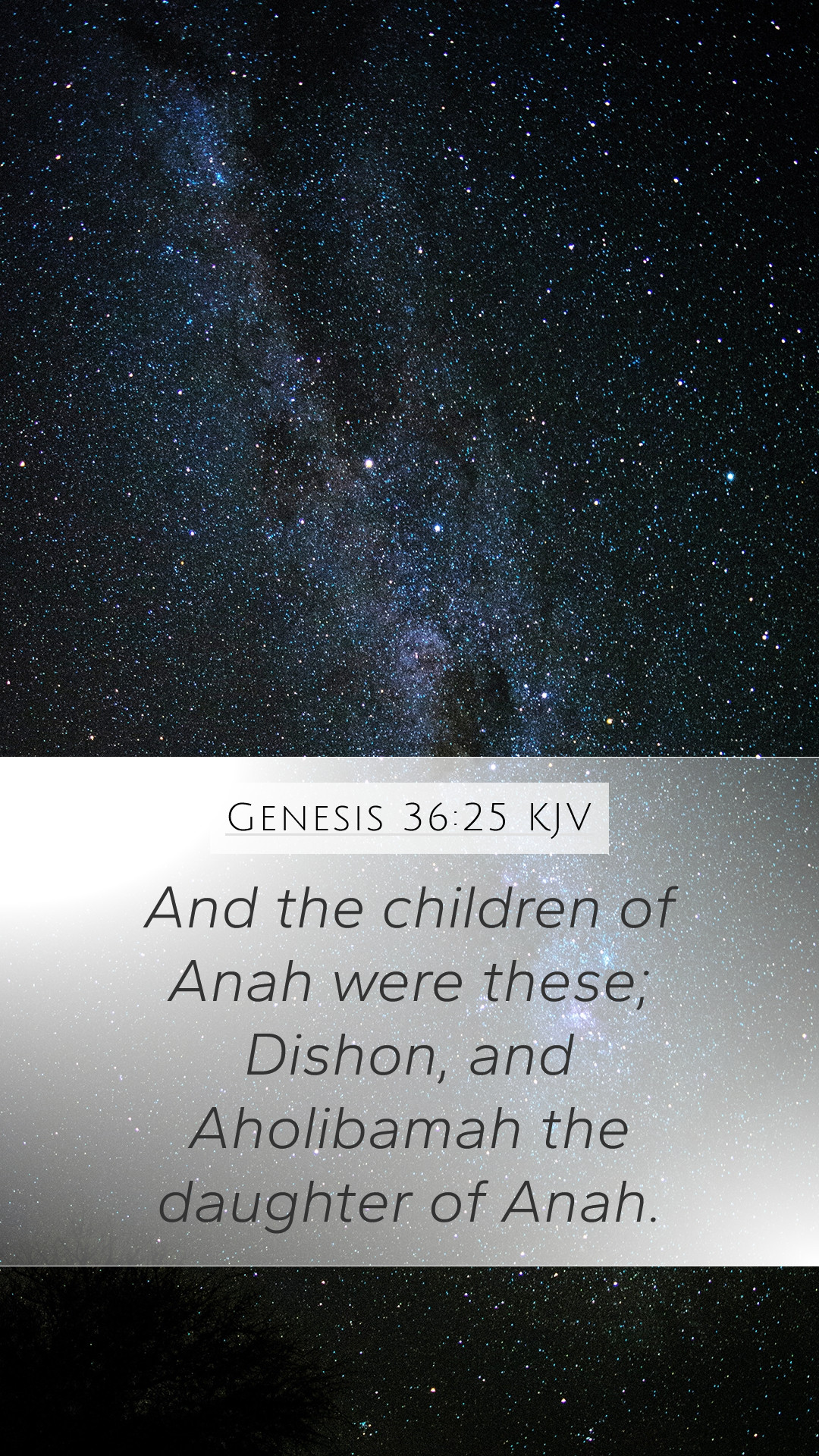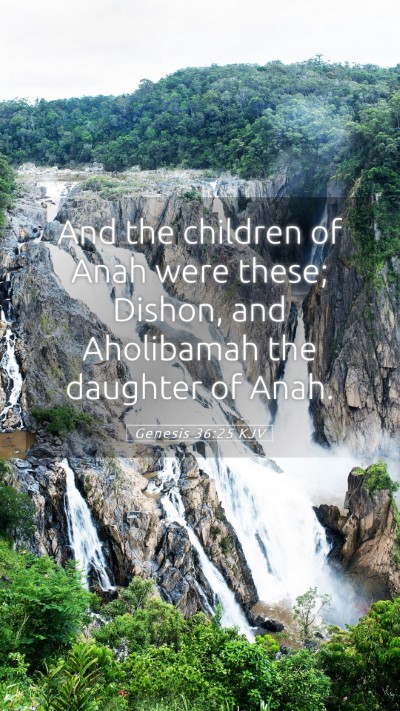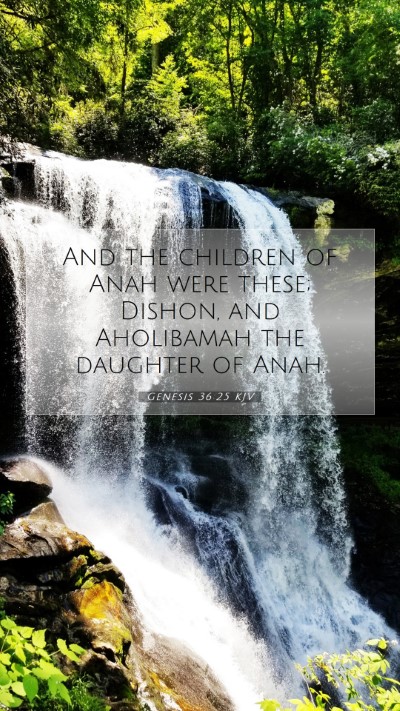Bible Verse Interpretation of Genesis 36:25
Genesis 36:25: "And the children of Anah were these; Dishon, and Aholibamah the daughter of Anah." This verse highlights the genealogy of Esau, demonstrating the ancestry and lineage that traces back to the patriarchs, a critical element in understanding biblical narratives and their implications.
Understanding the Meaning of Genesis 36:25
This verse, while seemingly straightforward, offers rich insights into biblical history and the unfolding of God's plan for His people. The mention of Anah and his children signifies the continuity of the lineage, particularly as it connects to the overarching story of Israel and the Edomites, descendants of Esau. The genealogical lists in the Bible often serve not only to maintain an accurate record of heritage but also to signify the fulfillment of God's promises throughout generations.
Commentary Insights
- Matthew Henry's Commentary:
Henry emphasizes the importance of this genealogical record, illustrating the transition from the line of Isaac to that of Esau, which is significant in understanding the separation between Israel and Edom. He notes how these names are tied to historical and spiritual lineage, shedding light on the significance of identity within the biblical context.
- Albert Barnes' Commentary:
Barnes focuses on the descendants' names, interpreting them as markers of cultural and social significance. He discusses how these names help define the larger narrative of the Edomites and their interactions with Israel, underlying the complexities of their relationship and the broader purpose of God in their histories.
- Adam Clarke's Commentary:
Clarke goes deeper into the identities of Dishon and Aholibamah, expounding on their roles within the context of Esau's lineage and the subsequent implications for the tribes of Edom. He suggests that these references serve as a reminder of the physical and spiritual heritage passed down through generations, influencing the lives of future descendants.
Historical Context of Genesis 36:25
Understanding this verse requires awareness of the historical context in which it was written. During the time of Genesis, genealogical records were crucial for establishing rights to land, inheritance, and social status. The focus on Anah's descendants provides a means of connecting later biblical events and characters back to their origins, emphasizing the omnipresence of God's plans.
The Role of Genealogy in Scripture
Genealogy in the Bible serves many purposes:
- Establishing Identity: The lineage denotes the heritage of the people involved, connecting them to the larger narrative of Israel.
- Fulfilling Promises: Each listing of names reflects the unfolding of God’s promises, often made to Abraham, Isaac, and Jacob.
- Highlighting Significance: Naming certain individuals highlights their importance in the biblical narrative, often linked to significant events in the history of Israel.
Application of Genesis 36:25
For modern readers, the verse challenges us to consider our own spiritual heritage. Just as the names are significant for the communities of their time, so too is our identity as part of the larger body of Christ. This draws parallels in understanding how our backgrounds and histories shape our faith and relationship with God.
Bible Study Insights
Study groups or online Bible studies focusing on this verse can delve into:
- How to interpret genealogy in biblical texts.
- The significance of names in biblical narratives.
- The relationship dynamics between Esau and Jacob and their enduring legacy.
Cross References
- Genesis 36:1 - The genealogy of Esau.
- Genesis 25:30 - The context of Esau and Jacob’s relationship.
- Obadiah 1:10-16 - The prophecy concerning Edom.
Conclusion
In summary, Genesis 36:25 represents much more than a familial list; it embodies the narrative of God's covenantal faithfulness and the unfolding of human history as designed by divine providence. Through genealogical records, believers gain insight into their spiritual journeys and the legacy of faith passed down through generations.


